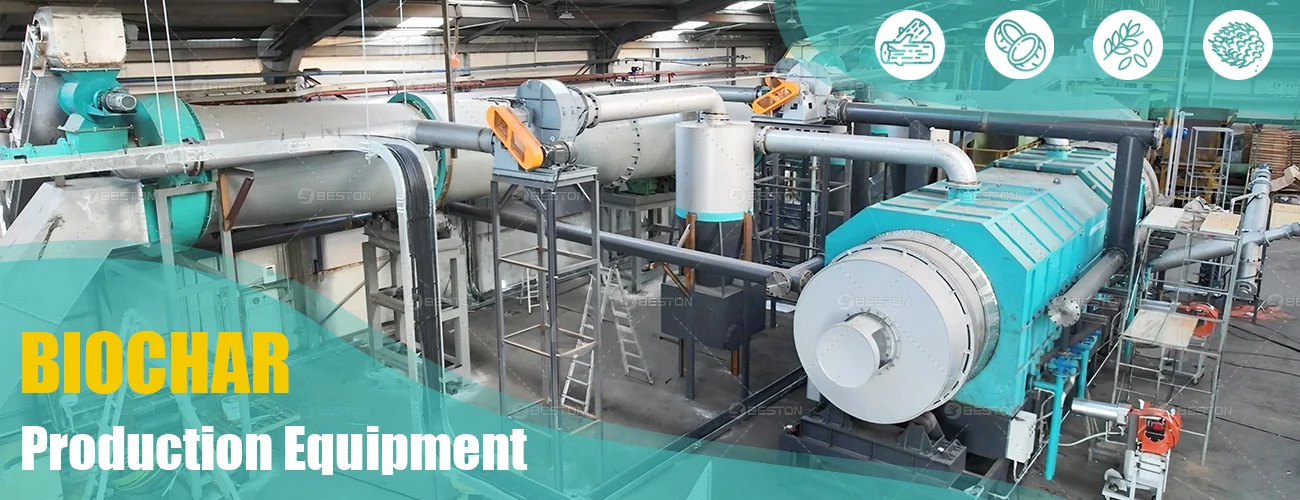The conversion of agricultural residues such as straw into biochar through thermochemical treatment has attracted global attention. By subjecting lignocellulosic material to controlled heating in an oxygen-limited environment, a stable carbonaceous solid is produced. While the practice presents a spectrum of opportunities, it also carries technical and ecological challenges that must be addressed for sustainable deployment.
Agronomic and Environmental Benefits
Biochar derived from straw offers a unique advantage in soil enhancement. Its porous structure improves aeration, boosts cation exchange capacity, and enhances moisture retention in sandy soils. In degraded farmland, these attributes translate into higher resilience against drought stress and improved nutrient availability.
Carbon sequestration is another major benefit. Once incorporated into soil, straw-derived biochar resists microbial decomposition, locking carbon for decades or even centuries. This process contributes directly to climate change mitigation strategies while simultaneously offering co-benefits such as reduced nitrous oxide emissions.
Straw biochar also helps reduce open-field burning of residues. In many regions, post-harvest burning remains a common practice, releasing significant amounts of particulate matter and greenhouse gases. Channeling straw into a biochar machine instead prevents air pollution and supports compliance with stricter emission regulations.

Energy and Resource Recovery
Thermochemical conversion of straw not only generates biochar but also produces condensable bio-oil and combustible syngas. These co-products provide on-site energy that can offset part of the operating costs. For instance, syngas can be redirected to fuel the reactor, creating a semi-self-sustaining cycle.
The char itself, beyond agronomic use, holds potential for industrial applications such as activated carbon production or incorporation into construction materials. This diversification of output markets improves the economic viability of straw utilization.
Technical and Operational Challenges
Despite its merits, straw as a feedstock is not without limitations. Its high ash content, especially silica, complicates thermal decomposition and can impair reactor longevity. Excessive ash also reduces the calorific value of biochar, limiting its utility in energy-focused applications.
Moisture content poses another obstacle. Harvested straw often carries significant residual water, and inadequate drying leads to energy inefficiencies. In a straw charcoal machine, high moisture lowers reactor temperatures, reduces bio-oil yield, and generates tarry by-products.
Feedstock handling is equally complex. Straw is bulky, low in bulk density, and costly to transport over long distances. Without pre-compaction or pelletization, logistics may outweigh the potential economic gains of conversion.
Environmental and Regulatory Concerns
Not all outcomes of straw pyrolysis are benign. During thermal treatment, the incomplete decomposition of organics can generate polycyclic aromatic hydrocarbons (PAHs) or other hazardous volatiles. If not properly controlled, these compounds compromise biochar quality and raise concerns over soil safety.
In addition, large-scale deployment may disturb local nutrient cycles. Returning straw directly to soil contributes potassium, silicon, and other minerals. When converted to biochar, the nutrient profile shifts, and excessive export of residues could reduce long-term soil fertility. Balancing carbon sequestration with nutrient recycling requires careful management.
From a regulatory standpoint, quality certification is mandatory. Biochar intended for agricultural use must meet stringent limits on heavy metals, organic pollutants, and pH variability. Operators of pyrolysis systems are increasingly required to comply with both environmental performance standards and product certification schemes.
Strategic Considerations
The advantages of producing biochar from straw are substantial: reduced air pollution, carbon storage, soil rehabilitation, and resource recovery. Yet these benefits are counterbalanced by technical hurdles in feedstock management, reactor operation, and environmental compliance.
Successful projects therefore hinge on integrated strategies. Feedstock preprocessing, precise thermal control, and emission abatement systems must be aligned with local agricultural practices and regulatory frameworks. When managed with precision, a pyrolysis plant dedicated to straw can transform a low-value residue into a portfolio of climate-positive products.
Ultimately, the debate over straw-derived biochar is not one of absolute advantage or disadvantage. It is a question of context, technology, and governance. Where infrastructure and oversight are strong, the practice can contribute to circular economy goals. Where these elements are weak, risks may overshadow potential gains.
Comments
No comments yet. Be the first to react!